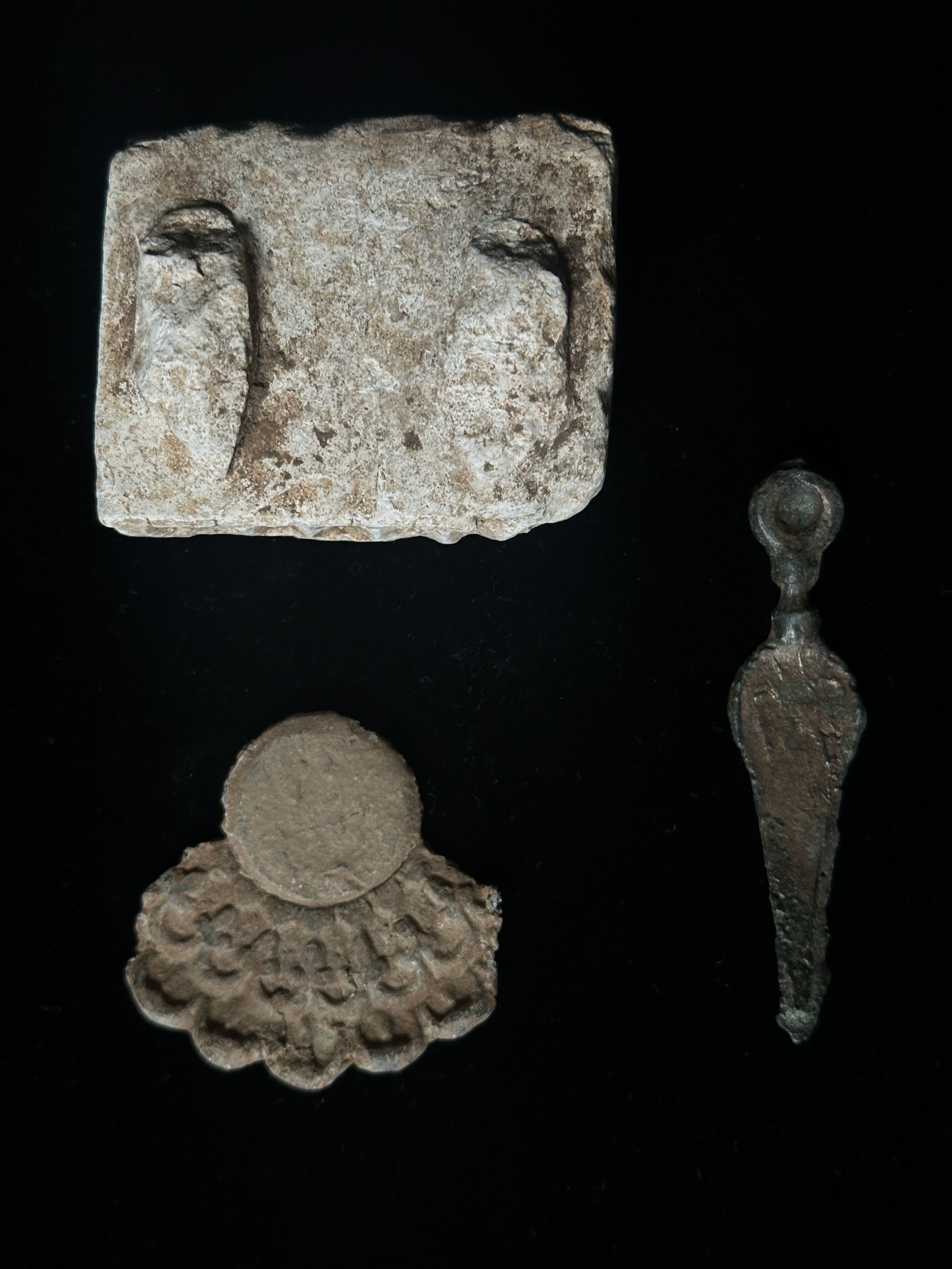 Image 1 of 2
Image 1 of 2

 Image 2 of 2
Image 2 of 2



UNEARTHED Set of Three Romano-British Fragments
1st–4th century A.D.
A group of three ancient fragments, recovered from the land near Wetwang in North Yorkshire. Together, they form a quiet constellation of Roman life and craftsmanship — worn, weathered, but enduring.
The first is a carved limestone block fragment, its softened edges and shallow recesses suggesting once-functional geometry, now eroded into abstraction. The second, a delicate bronze tool or unfinished nail-cleaner, tapers to a slender point — intimate, utilitarian, and elegant in its restraint. The third: a scalloped architectural or ornamental form, perhaps a brooch or decorative furniture element, cast in bronze and softened by time.
These are remnants of an empire’s daily gestures — of grooming, dwelling, embellishing. Held together, they become something else: a study in presence, gesture, and the materiality of time.
Measurements: 2.25 × 2 × 1” (marble) / 1.75 × 1.75” (bronze)/ 2.75 x .5” (nail cleaner)
Material: Carved marble, bronze
Origin: Romano-British; found near Wetwang, North Yorkshire, UK
Condition: As found. Worn surfaces, oxidation and losses consistent with age.
Provenance:
Found in the 1990s–early 2000s in North Yorkshire. Acquired in the UK circa 2006–2008. From the Ian Wilkinson collection, Nottinghamshire, UK — a collection formed since 1985.
1st–4th century A.D.
A group of three ancient fragments, recovered from the land near Wetwang in North Yorkshire. Together, they form a quiet constellation of Roman life and craftsmanship — worn, weathered, but enduring.
The first is a carved limestone block fragment, its softened edges and shallow recesses suggesting once-functional geometry, now eroded into abstraction. The second, a delicate bronze tool or unfinished nail-cleaner, tapers to a slender point — intimate, utilitarian, and elegant in its restraint. The third: a scalloped architectural or ornamental form, perhaps a brooch or decorative furniture element, cast in bronze and softened by time.
These are remnants of an empire’s daily gestures — of grooming, dwelling, embellishing. Held together, they become something else: a study in presence, gesture, and the materiality of time.
Measurements: 2.25 × 2 × 1” (marble) / 1.75 × 1.75” (bronze)/ 2.75 x .5” (nail cleaner)
Material: Carved marble, bronze
Origin: Romano-British; found near Wetwang, North Yorkshire, UK
Condition: As found. Worn surfaces, oxidation and losses consistent with age.
Provenance:
Found in the 1990s–early 2000s in North Yorkshire. Acquired in the UK circa 2006–2008. From the Ian Wilkinson collection, Nottinghamshire, UK — a collection formed since 1985.
